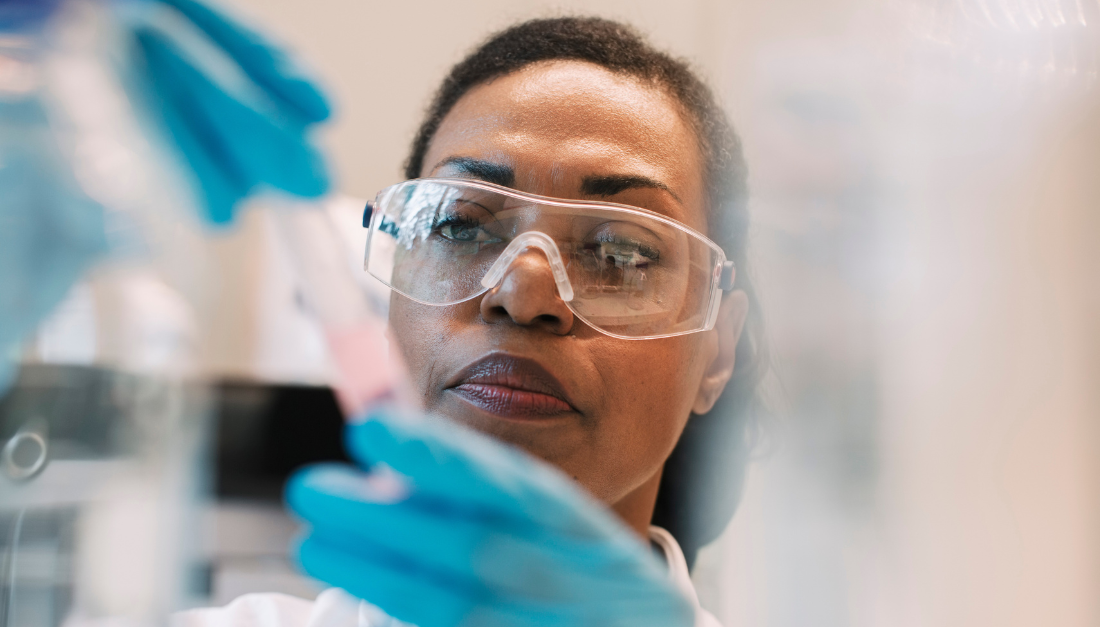Since the 1980s, October has been recognized as National Breast Cancer Awareness Month — an opportunity for us to unite as a community to honor those who have had breast cancer and raise awareness about progress biopharmaceutical researchers have made towards treating the disease.
In the United States, breast cancer is one of the most commonly diagnosed forms of cancer among women and is the second leading cause of cancer deaths for women after lung cancer. In 2022, it is estimated that 287,850 new cases of invasive breast cancer — meaning the cancer has the potential to spread to beyond the breast ducts and lobules into surrounding normal tissue — will be diagnosed in women and the disease will claim the lives of 43,250 women.
While breast cancer still impacts many individuals and families, over the past few decades, the progress made to develop treatments to fight against the disease and improve the lives of patients has advanced greatly. Since its peak in 1989, death rates for those diagnosed with breast dropped by over 42%, and the chances a breast cancer patient will live more than five years after diagnosis is over 90%. Along with advances in screening and prevention, these major gains can be attributed to new cancer medicines. In fact, between 2000 and 2016 alone, new medicines were estimated to be associated with the prevention of nearly 1.3 million cancer deaths — including over 127,000 prevented breast cancer deaths.
Though overall breast cancer survival outcomes are quite good — due in large part to new medicines —certain types of breast cancer have lacked treatment options and proven a particular challenge for the medical and scientific community. But recent progress is providing tremendous hope for these patients. In August, clinical data presented at the American Society of Clinical Oncology’s (ASCO) annual meeting on a recently approved breast cancer therapy marked a major milestone for patients with a type of breast cancer known as “HER2-low.” The data showed that the medicine, an immunotherapy, allowed advanced HER2-low breast cancer patients to live twice as long without their cancer growing compared to standard chemotherapy. But critically, the findings represented the potential to redefine treatment for approximately half of all metastatic breast cancer patients — those whose tumors express low levels of HER2 — who historically have lacked treatment options.
The biopharmaceutical industry continues to push forward to research and develop new treatments like these for breast cancer. Our recent report on Medicines in Development for Women’s Health found there were 119 medicines in clinical trials or under review by the U.S. Food & Drug Administration (FDA) to treat breast cancer. Among the medicines in development are medicines that use innovative ways to target the disease such as AKT-inhibitors for triple-negative breast cancer — an aggressive form of breast cancer that accounts for approximately one out of 10 breast cancer diagnoses.
In light of this progress, these advances in treatment can only be sustained with a policy and regulatory framework that fosters this kind of innovation. That’s why it is concerning that the Inflation Reduction Act (IRA) severely undercuts biopharmaceutical R&D efforts, which runs counter to efforts by the Biden administration to fight cancer. Companies already operate with tremendous uncertainty with only one out of 10 potential new medicines ever making it out of phase one clinical trials and into the hands of patients. This law will upend incentives for R&D investment, with some economists estimating that the IRA could result in 135 fewer new treatments over the next two decades.
Furthermore, the IRA guts the incentives necessary to encourage investment in R&D after medicines are approved. Post-approval research paves the way for important advancements in patient care that includes expanding and discovering new uses for approved medicines. Some of the most important research on medicines, particularly for disease areas like cancer, happens after a medicine is approved. For example, nearly 60% of oncology medicines approved a decade ago received additional approvals for new indications, and most of those were seven or more years after the initial approval according to an analysis of FDA approval data conducted by Partnership for Health Analytic Research.
As we recognize Breast Cancer Awareness Month, the biopharmaceutical industry stands committed to researching and developing new medicines. At the same time, it is critical policymakers recognize the need for fostering an environment that allows this work to be sustained. We will continue to educate the public and policymakers about the harm the IRA and other misguided price setting policies will do to patients, R&D and the broader health care system. And we will never stop fighting for the kind of solutions patients and our health care system need.



